You are using an out of date browser. It may not display this or other websites correctly.
You should upgrade or use an alternative browser.
You should upgrade or use an alternative browser.
☕ Coffee ☕: Ingredients, Roasting, Grinding, Brewing, and Tasting
- Thread starter passedpawn
- Start date
-
- Tags
- coffee

Help Support Homebrew Talk:
This site may earn a commission from merchant affiliate
links, including eBay, Amazon, and others.
HarborTownBrewing
Well-Known Member
This discussion on these methods has me really thinking about how simple and cheap it can be to make good coffee. Sometimes I see it as a chore...I'm just not feeling like roasting, but I need coffee so I roast it even though I'm not up for it. Kind of like some nights when I don't feel like making dinner so I stop at Taco Bell.
Then yesterday I read this interview with Tom from Sweet Marias. I honestly can't remember where I saw this posted (it might have been right here on this thread, in which case I apologize) but I read it yesterday, as well as the original interview. If you have 15 minutes to sit down and read it, it's pretty interesting and gives a good enlightenment to some of the process of sourcing and whatnot.
https://www.baristamagazine.com/master-qa-continued-tom-owen/
On a side note, on one of the Facebook roasting pages I follow there is a farmer who posts regularly and has been getting more and more respect from some of the members of the group who have bought his beans. I decided to check it out and ordered 5 lbs of beans from him for a whopping $25 shipped. ($5/lb with free shipping). I haven't roasted it yet but I can't wait to give it a try and I'm hoping it is good. It would be nice to be able to buy directly from the farmer without going through a middle man, though, as such the info is a little less descriptive - no graphs, flavor charts, ratings, etc. Just a simple description. I'll post my review once I get a chance to roast and cup it, hopefully in the next week. https://legacyfarmscoffee.com/
Then yesterday I read this interview with Tom from Sweet Marias. I honestly can't remember where I saw this posted (it might have been right here on this thread, in which case I apologize) but I read it yesterday, as well as the original interview. If you have 15 minutes to sit down and read it, it's pretty interesting and gives a good enlightenment to some of the process of sourcing and whatnot.
https://www.baristamagazine.com/master-qa-continued-tom-owen/
On a side note, on one of the Facebook roasting pages I follow there is a farmer who posts regularly and has been getting more and more respect from some of the members of the group who have bought his beans. I decided to check it out and ordered 5 lbs of beans from him for a whopping $25 shipped. ($5/lb with free shipping). I haven't roasted it yet but I can't wait to give it a try and I'm hoping it is good. It would be nice to be able to buy directly from the farmer without going through a middle man, though, as such the info is a little less descriptive - no graphs, flavor charts, ratings, etc. Just a simple description. I'll post my review once I get a chance to roast and cup it, hopefully in the next week. https://legacyfarmscoffee.com/
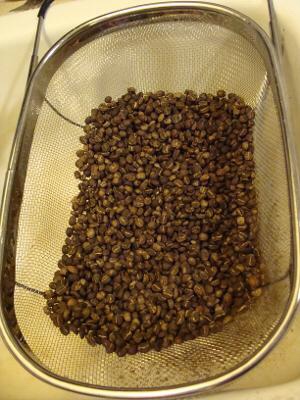
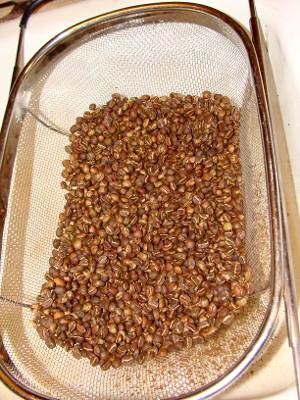
Did you roast those in the Zippy pop?
Yes, I just threw in the Kenya beans and roasted them on my gas stove at level 3 out of 7. I roasted them for 18 minutes but I don’t think that was long enough. For the Guatemala beans I preheated the pot for about a minute and quickly dumped the beans in the little port on the lid and recapped it to keep heat loss at a minimum. I roasted them for 22 minutes on the level 3 setting and I feel like they came out closer to what I like. I haven’t tried them yet, maybe in the morning.Did you roast those in the Zippy pop?
Both times I was roasting 1 pound.

$176.97
1pc Commercial Keg Manifold 2" Tri Clamp,Ball Lock Tapping Head,Pressure Gauge/Adjustable PRV for Kegging,Fermentation Control
hanhanbaihuoxiaoshoudian

$58.16
HUIZHUGS Brewing Equipment Keg Ball Lock Faucet 30cm Reinforced Silicone Hose Secondary Fermentation Homebrew Kegging Brewing Equipment
xiangshuizhenzhanglingfengshop

$10.99 ($31.16 / Ounce)
Hornindal Kveik Yeast for Homebrewing - Mead, Cider, Wine, Beer - 10g Packet - Saccharomyces Cerevisiae - Sold by Shadowhive.com
Shadowhive

$53.24
1pc Hose Barb/MFL 1.5" Tri Clamp to Ball Lock Post Liquid Gas Homebrew Kegging Fermentation Parts Brewer Hardware SUS304(Liquid Hose Barb)
yunchengshiyanhuqucuichendianzishangwuyouxiangongsi

$479.00
$559.00
EdgeStar KC1000SS Craft Brew Kegerator for 1/6 Barrel and Cornelius Kegs
Amazon.com

$20.94
$29.99
The Brew Your Own Big Book of Clone Recipes: Featuring 300 Homebrew Recipes from Your Favorite Breweries
Amazon.com

$22.00 ($623.23 / Ounce)
AMZLMPKNTW Ball Lock Sample Faucet 30cm Reinforced Silicone Hose Secondary Fermentation Homebrew Kegging joyful
无为中南商贸有限公司

$7.79 ($7.79 / Count)
Craft A Brew - LalBrew Voss™ - Kveik Ale Yeast - For Craft Lagers - Ingredients for Home Brewing - Beer Making Supplies - (1 Pack)
Craft a Brew

$33.99 ($17.00 / Count)
$41.99 ($21.00 / Count)
2 Pack 1 Gallon Large Fermentation Jars with 3 Airlocks and 2 SCREW Lids(100% Airtight Heavy Duty Lid w Silicone) - Wide Mouth Glass Jars w Scale Mark - Pickle Jars for Sauerkraut, Sourdough Starter
Qianfenie Direct

$53.24
1pc Hose Barb/MFL 1.5" Tri Clamp to Ball Lock Post Liquid Gas Homebrew Kegging Fermentation Parts Brewer Hardware SUS304(Liquid Hose Barb)
Guangshui Weilu You Trading Co., Ltd
HarborTownBrewing
Well-Known Member
Yes, I just threw in the Kenya beans and roasted them on my gas stove at level 3 out of 7. I roasted them for 18 minutes but I don’t think that was long enough. For the Guatemala beans I preheated the pot for about a minute and quickly dumped the beans in the little port on the lid and recapped it to keep heat loss at a minimum. I roasted them for 22 minutes on the level 3 setting and I feel like they came out closer to what I like. I haven’t tried them yet, maybe in the morning.
Both times I was roasting 1 pound.
Try to get your total roast time under 12 mins. Longer roast times lead to baking instead of roasting, leading to dull/off flavors. A quick roast generally means brighter and more pronounced flavors. You can always start with higher heat in the beginning and slowly taper it off as the roast goes, especially as the beans begin browning around 4 or 5 mins in.
Try to get your total roast time under 12 mins. Longer roast times lead to baking instead of roasting, leading to dull/off flavors. A quick roast generally means brighter and more pronounced flavors. You can always start with higher heat in the beginning and slowly taper it off as the roast goes, especially as the beans begin browning around 4 or 5 mins in.
...and it’ll also mean less time standing at the stove turning that crank!
Try to get your total roast time under 12 mins. Longer roast times lead to baking instead of roasting, leading to dull/off flavors. A quick roast generally means brighter and more pronounced flavors. You can always start with higher heat in the beginning and slowly taper it off as the roast goes, especially as the beans begin browning around 4 or 5 mins in.
That might be my problem with the heat gun & colander method. I haven't timed the process, but I think I might have been baking those beans. The beans from the first few batches had a dry, parched appearance and the resulting coffee tasted a little flat. But in my latest batch, I got the heat gun nozzle right in there close (~1") and constantly stirred with a spoon, keeping the beans hot. That batch turned out better, and those beans had some of that shiny oil coating.
That might be my problem with the heat gun & colander method. I haven't timed the process, but I think I might have been baking those beans. The beans from the first few batches had a dry, parched appearance and the resulting coffee tasted a little flat. But in my latest batch, I got the heat gun nozzle right in there close (~1") and constantly stirred with a spoon, keeping the beans hot. That batch turned out better, and those beans had some of that shiny oil coating.
Shiny oil coating is what happens when you get your roast very close to 2nd crack(milk on rice crispy sounding) and beyond. You normally see an increase in smoke about that time as well.
I used a camp stove and cast iron pot to even out the heat when I roasted with a heat gun, also did not have to get quite so close to the beans but the nozzle was inside the pot most of the time.
Shiny oil coating is what happens when you get your roast very close to 2nd crack(milk on rice crispy sounding) and beyond. You normally see an increase in smoke about that time as well.
I used a camp stove and cast iron pot to even out the heat when I roasted with a heat gun, also did not have to get quite so close to the beans but the nozzle was inside the pot most of the time.
I do have a camp stove and cast iron pot, so I might try that. Good idea.
Yeah, my last roast was fairly dark, hence, the shiny oil slick. But not quite French roast territory. I didn't hear 2nd crack, but it was probably close. Turned out tasty and none of the "parched" flavor, so I'm happy about that. I roast 1/4 lb. at a time.
applescrap
Be the ball!
Here is a roast from this morning. A pound of Brazilian. I am trying hard to avoid tipping. Ful power to 9 mins, then backed heat off a second time at 1c. Here is the chaff. Some coffees seem to leave way more of this. Only way I could get pic to fit was blown up screen shot. Need to lower quality.
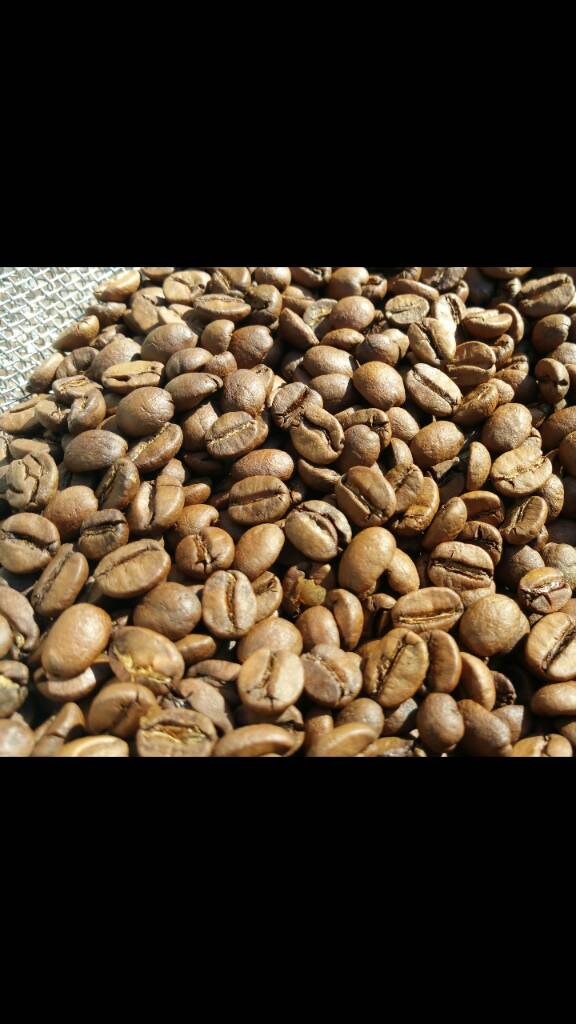
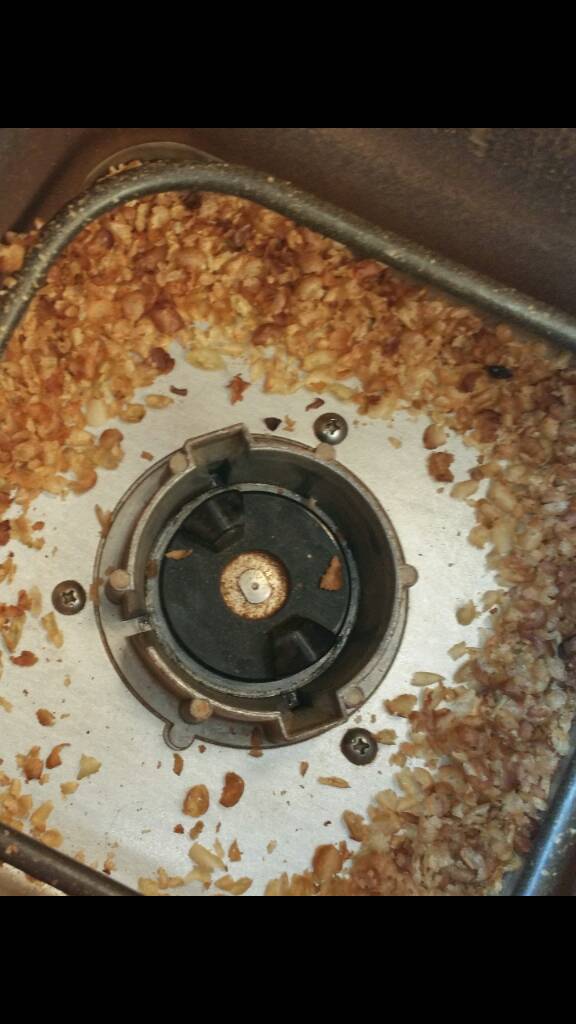
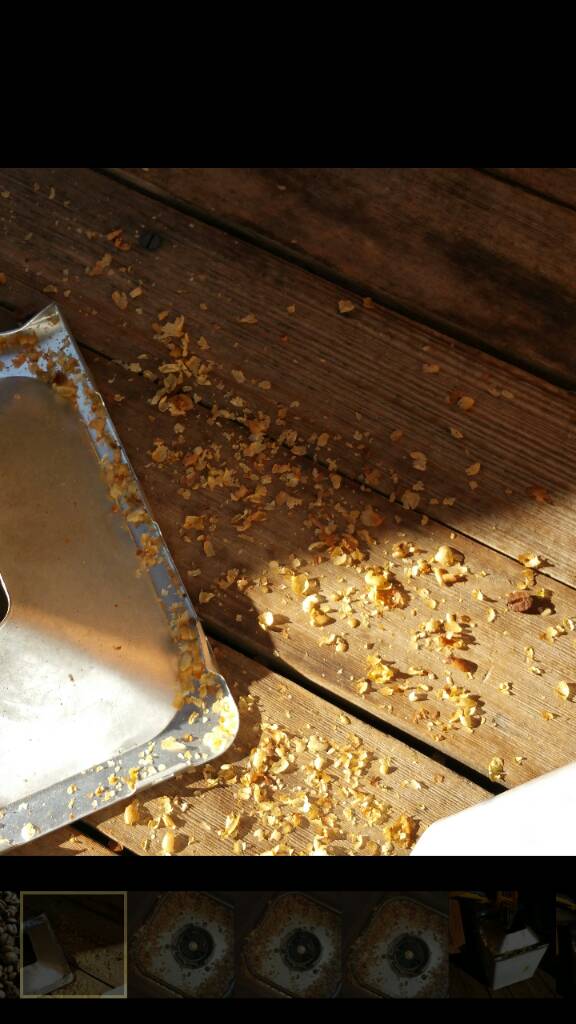
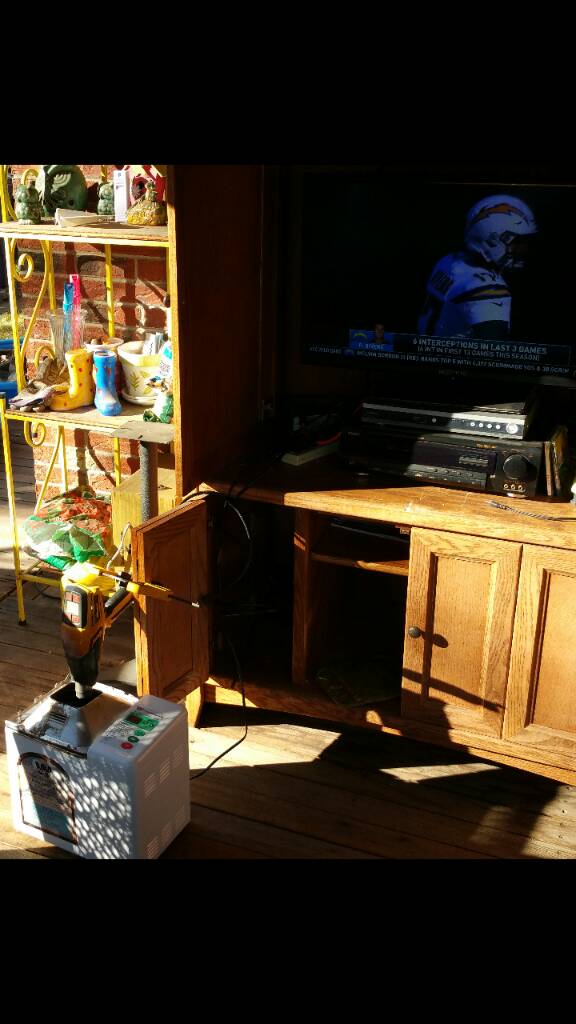
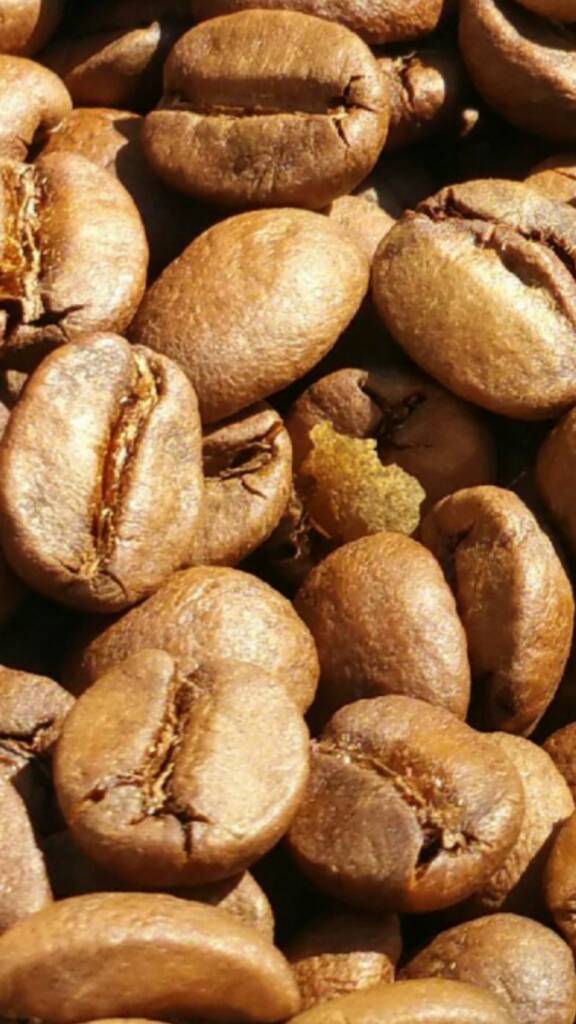





@applescrap im continually impressed with your dedication to learn from & improve your roasts. those beans look great & Brazilian greens will the first ones to tip/scorch. that last macro shot looks great. i bet you're gonna have some great drinking chocolate/(high end) mixed nuts/bass bombs to drink in the morning. sure to bring a smile to the face

I took the advice of @HarborTownBrewing and increased the heat. The beans cracked in half the time and the crack was much more prominent. About 5 minutes after adding them to the preheated pot. I left them in for about a minute after the 1st crack and these beans were obviously different. The bean was actually puffy and smooth compared to the beans I roasted at a lower temp which were still pretty small and kind of wrinkled. I noticed the low temp beans had a sort of vegetal flavor when I brewed them. I don’t know if it’s ok to do this but I re-roasted the low temp beans. I figured they weren’t very good anyway so if I ruin them then oh well.
HarborTownBrewing
Well-Known Member
This is good observation! How long did you leave the beans to rest before brewing them? It isn't uncommon for lighter roasts to taste better after 5,7,10 days.I took the advice of @HarborTownBrewing and increased the heat. The beans cracked in half the time and the crack was much more prominent. About 5 minutes after adding them to the preheated pot. I left them in for about a minute after the 1st crack and these beans were obviously different. The bean was actually puffy and smooth compared to the beans I roasted at a lower temp which were still pretty small and kind of wrinkled. I noticed the low temp beans had a sort of vegetal flavor when I brewed them. I don’t know if it’s ok to do this but I re-roasted the low temp beans. I figured they weren’t very good anyway so if I ruin them then oh well.
Sometimes you will get a green, grassy, vegetable flavor from beans which were roasted too quickly. The reason being the outside of the bean roasts faster than the inside, thus finishing the outside sooner than the inside and leaving the inside still a little green and under roasted. The under developed inside part of the bean definitely will lead to grassy flavors.
I bet if you can find a middle ground, getting to first Crack about 8 or 10 mins into the roast you'll have hit the sweet spot.
24 hours. I tried them again at 48 hours and there was no difference.This is good observation! How long did you leave the beans to rest before brewing them? It isn't uncommon for lighter roasts to taste better after 5,7,10 days.
Sometimes you will get a green, grassy, vegetable flavor from beans which were roasted too quickly. The reason being the outside of the bean roasts faster than the inside, thus finishing the outside sooner than the inside and leaving the inside still a little green and under roasted. The under developed inside part of the bean definitely will lead to grassy flavors.
I bet if you can find a middle ground, getting to first Crack about 8 or 10 mins into the roast you'll have hit the sweet spot.
I really struggled with those green flavors with a tanzanian coffee I had recently. Four roasts and they all had it to some degree. I usually describe it as green bell pepper, but one morning my wife was around when I made that coffee, I told her that it wasn't great and had her smell it, with no other prompt, she said it smelled like tomatoes. Tomato and green pepper coffee is not a great experience. I found that brew temp has a big impact on this as well. When brewing with the chemex, i typically let the water cool a little off of boiling, but with that tanzanian, I kept the water boiling right up until taking it off the stove to pour. That did help reduce the vegetal flavors.
I have a Bodum French press that I use everyday for every coffee I drink. I bring the water to a boil in a tea kettle and just pour it in. Could the water be too hot and cause off flavors? I don’t feel like that has ever been a problem with any other coffee though so I just think I need to keep working on my roasting.
HarborTownBrewing
Well-Known Member
Yes, it's definitely too hot. Shoot for around 200 to 205 degrees when brewing coffee. You'd be amazed how much a difference even just 2 degrees has on coffee. At work my kettle doesn't have a thermometer so I just bring it close to a boil and my light roasts (just about everything) taste really grassy when I get to close to boil.
applescrap
Be the ball!
@applescrap im continually impressed with your dedication to learn from & improve your roasts. those beans look great & Brazilian greens will the first ones to tip/scorch. that last macro shot looks great. i bet you're gonna have some great drinking chocolate/(high end) mixed nuts/bass bombs to drink in the morning. sure to bring a smile to the face
Thank you much for the kind words and for leading the way. Haha, I make up for a lack of smarts and poor listening with raw dedication and effort.
applescrap
Be the ball!
Yay Colorado. I think water boils here at 202!Yes, it's definitely too hot. Shoot for around 200 to 205 degrees when brewing coffee. You'd be amazed how much a difference even just 2 degrees has on coffee. At work my kettle doesn't have a thermometer so I just bring it close to a boil and my light roasts (just about everything) taste really grassy when I get to close to boil.
I never considered the not-quite-boiling idea for water. I've had some of that vegetal flavor at times, though my last batch was better. I just received my Clever last week and the instructions mentioned something like 195-205. I usually microwave water in a Pyrex measuring cup and bring it to a light boil. Instead, I'll take it out before it gets that hot and see if it's better.
Hey @applescrap, I though water boils at room temp in CO!
Hey @applescrap, I though water boils at room temp in CO!
Any suggestions on how to minimize the static with a bur grinder? I have the Baratza Encore and lately the bin holds a lot of grounds due to static when I try to pour them out.
Last edited:
If you single dose, the Ross Droplet Technique (RDT) works really well. A quick spritz or 2 of water on the beans prior to grinding will all but completely eliminate static. Kafatek actually includes a small glass spritzing bottle with their grinders just for this.
I’ve also heard of people using the steam wand on an espresso machine to do this.
I never considered the not-quite-boiling idea for water. I've had some of that vegetal flavor at times, though my last batch was better. I just received my Clever last week and the instructions mentioned something like 195-205. I usually microwave water in a Pyrex measuring cup and bring it to a light boil. Instead, I'll take it out before it gets that hot and see if it's better.
Hey @applescrap, I though water boils at room temp in CO!
One way to do that more consistently is to add a fixed amount of cold water to your boiling water (e.g., a tsp to a cup).
If you single dose, the Ross Droplet Technique (RDT) works really well. A quick spritz or 2 of water on the beans prior to grinding will all but completely eliminate static. Kafatek actually includes a small glass spritzing bottle with their grinders just for this.
I’ve also heard of people using the steam wand on an espresso machine to do this.
Thanks guys I’ll look into this.
@jimyson, guess I should look into an espresso machine. [emoji6][emoji6]
HarborTownBrewing
Well-Known Member
Add a couple drops of water, and then when it's done grinding give the grinder a couple pats on the side, or rock it a little bit by lifting the front feet up half an inch and bringing it back down. Gently, but enough to show it who is boss.Any suggestions on how to minimize the static with a bur grinder? I have the Baratza Encore and lately the bin holds a lot of grounds due to static when I try to pour them out.
There's a chute in a lot of grinders that holds a lot of static bean matter in the winter, and a little knock or rock will drop most of it out.
I have a grinder that develops a lot of static and holds in some coffee. I use a small brush to clean it out. I want to get every bit out. 
Similar threads
- Replies
- 18
- Views
- 1K
- Replies
- 6
- Views
- 1K

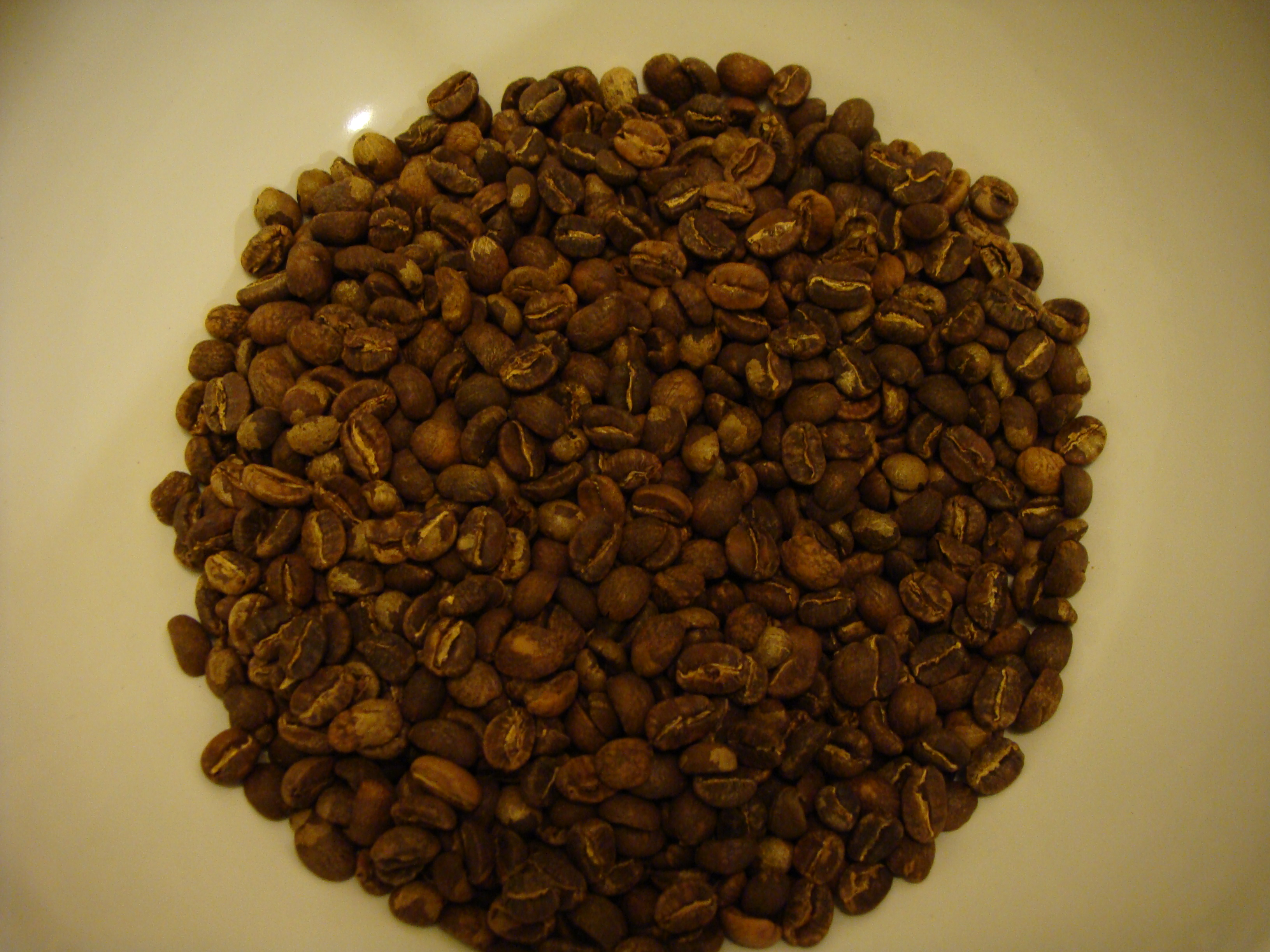
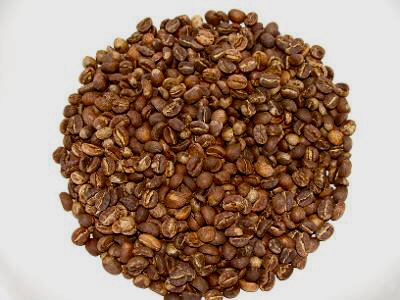





































![Craft A Brew - Safale BE-256 Yeast - Fermentis - Belgian Ale Dry Yeast - For Belgian & Strong Ales - Ingredients for Home Brewing - Beer Making Supplies - [3 Pack]](https://m.media-amazon.com/images/I/51bcKEwQmWL._SL500_.jpg)








